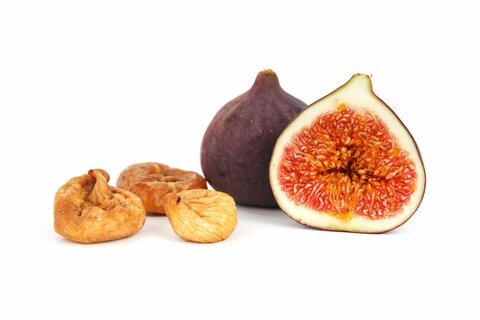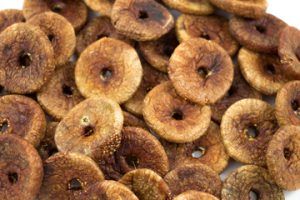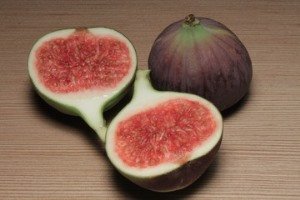Turkish Figs:
Turkish figs are a fantastic source of nutrients, including vitamins and minerals, that can improve overall health. They are not only mouthwatering but also very adaptable in cooking. There are countless ways to include them in your meals, from salads to desserts. The advantages of Turkish figs will be discussed in this piece, along with information on their cultivation and history. Let’s explore the delicious and nourishing world of Turkish figs to discover why they’re a must-have for fruit lovers.
Nutritional Benefits of Turkish Figs:
One of the healthiest fruits you can consume is Turkish figs. They have a lot of important vitamins and nutrients that are good for your general health. These are a few of the main dietary advantages of Turkish figs.
Vitamins and Minerals:
Turkish figs include plenty of sources of essential vitamins and minerals like potassium, calcium, magnesium, iron, and vitamin B6. Whereas calcium, magnesium, and potassium are needed for the growth and maintenance of healthy bones and teeth, potassium is crucial for maintaining normal blood pressure and heart function. It also contains iron, vitamin B6, and vitamin B6, which are essential for the production of red blood cells as well as appropriate brain function.
Fiber and low in calories:
Turkish figs contain a lot of fiber, which is crucial for promoting a healthy digestive system and avoiding diarrhea. Furthermore, fiber lowers blood sugar levels and promotes weight loss by making you feel satisfied and full.
Turkish figs have a delicious, juicy flavor but are generally low in calories. Medium-sized figs are a wonderful snack option for people watching their calorie intake because they only have 47 calories per one.
Turkish figs are also a great source of antioxidants, which can help fend off disease and reduce inflammation.
Health Benefits of Turkish Figs:

Encouraged digestion reduces inflammation.
Turkish figs contain a lot of nutritional fiber, which is crucial for fostering a healthy digestive system. Constipation can be avoided, and bowel motions are helped by fiber.
Turkish figs contain lots of antioxidants, which can aid the body’s inflammation. Figs can aid in the prevention of these illnesses and promote general health and wellness by reducing inflammation.
Weight loss and healthy skin:
Turkish figs are a fantastic addition to a diet for losing weight because they are low in calories and high in fiber. By decreasing the probability of overeating or consuming unhealthy foods, fiber makes you feel full and satisfied. Turkish figs are a great source of antioxidants, which can help shield skin from oxidative harm. Wrinkles, UV damage, and other aging symptoms are all brought on by free radicals. Consuming figs can support young, healthy skin.
Edible Uses of Turkish Figs:

Turkish figs can be used in savory and sweet recipes, including salads and
desserts. Check out these delectable recipes: For a flavorful and vibrant meal, this delicious salad combines the peppery flavor of arugula with the sweetness of figs. Simply combine rocket, sliced figs, shredded goat cheese, and balsamic and olive oils. For added crunch, scatter the crushed walnuts on top.
These delectable canapés are ideal as a celebration appetizer or as a snack. The fresh figs are simply cut into slices and baked for a short time. A piece of baguette with goat cheese on it should be garnished with roasted figs. Honey can be drizzled on top for some flavor.
This cake is the ideal treat because it is sweet and nutty. To make a pastry, simply combine butter, sugar, and almond flour. Place the fig slices on top and cover with the almonds, chopped. Enjoy after baking until toasty brown.
I’m eager to share with you the various varieties of figs that come from this vibrant nation because I adore Turkish figs. Turkey is renowned for growing some of the world’s most succulent, sweet, and delicious figs, so it should not be surprising that they are so highly sought-after everywhere.
Calimyrna fig : among the most well-liked varieties of Turkish figs. This variety stands out from other figs due to its size and plumpness, as well as its nutty flavor. Calimyrna figs are also renowned for their tender skin and golden color. Although they are frequently consumed raw, they can also be dried for an extended shelf life.
Bursa fig. The black Turkish fig is yet another variety. This cultivar has sweet, juicy meat and dark purple skin. Black Bursa figs are frequently added to salads and sweets and are best consumed fresh. They are a great source of fiber and antioxidants, making them a healthy supplement to any diet.
Aydin fig., which originated in Turkey’s Aegean area. Despite being smaller than other types, these figs have an intense sweetness and flavor. They are frequently preserved and eaten as a snack on their own or in baked goods.
Regardless of the Turkish fig type you choose, you’re sure to love the taste and texture. For any foodie, whether you’re a fig aficionado or just looking to try a new dish,
Kadota figs possess pale interiors and a light green epidermis, and they are less sweet than other figs. Raw kadota figs taste excellent. Although they are not the best or sweetest figs when eaten raw, they are acceptable and will be excellent if they are the only figs available. They are excellent options for jam-making because they respond well to being heated up with other ingredients.
Dried Turkish figs:
Indulge your taste buds in the exquisite allure of dried Turkish figs, a delectable treat that transcends ordinary snacking. Bursting with rich, honeyed sweetness, these figs hail from the sun-drenched orchards of Turkey, where they ripen to perfection under the Mediterranean sun. Prized for their luscious, velvety texture and robust flavor profile, dried Turkish figs are a culinary treasure that captivates discerning palates worldwide.
Obtained from the rich valleys of Turkey, these figs are fastidiously sun-dried to preserve their regular goodness. Each chomp is an agreeable dance of chewiness and delicacy, leaving a waiting pleasantness that is both fulfilling and liberal. Loaded with fundamental supplements, including fiber, nutrients, and minerals, these figs offer a healthy eating choice that sustains the body while fulfilling desires.

Past their powerful taste, dried Turkish figs gloat with a flexible culinary allure. Raise your morning meal by adding them to yogurt or cereal, or relish them as an independent nibble for an irreproachable treat. Their regular sugars make them a brilliant supplement to cheddar platters, offering an equilibrium of flavors that is certain to dazzle visitors.
Integrate dried Turkish figs into your solid way of life, as they are liberated from counterfeit additives and added substances. Our top-notch determination guarantees that you experience the real quintessence of Turkish figs in each nibble. Whether you’re a wellbeing-conscious individual or a culinary lover, these figs give a brilliant and nutritious expansion to your storage space.
Discover the unparalleled satisfaction of indulging in the sun-kissed sweetness of dried Turkish figs—a timeless, flavorful journey that transports you to the heart of Turkey’s bountiful orchards. Elevate your snacking experience with these succulent gems that redefine the art of wholesome indulgence.

